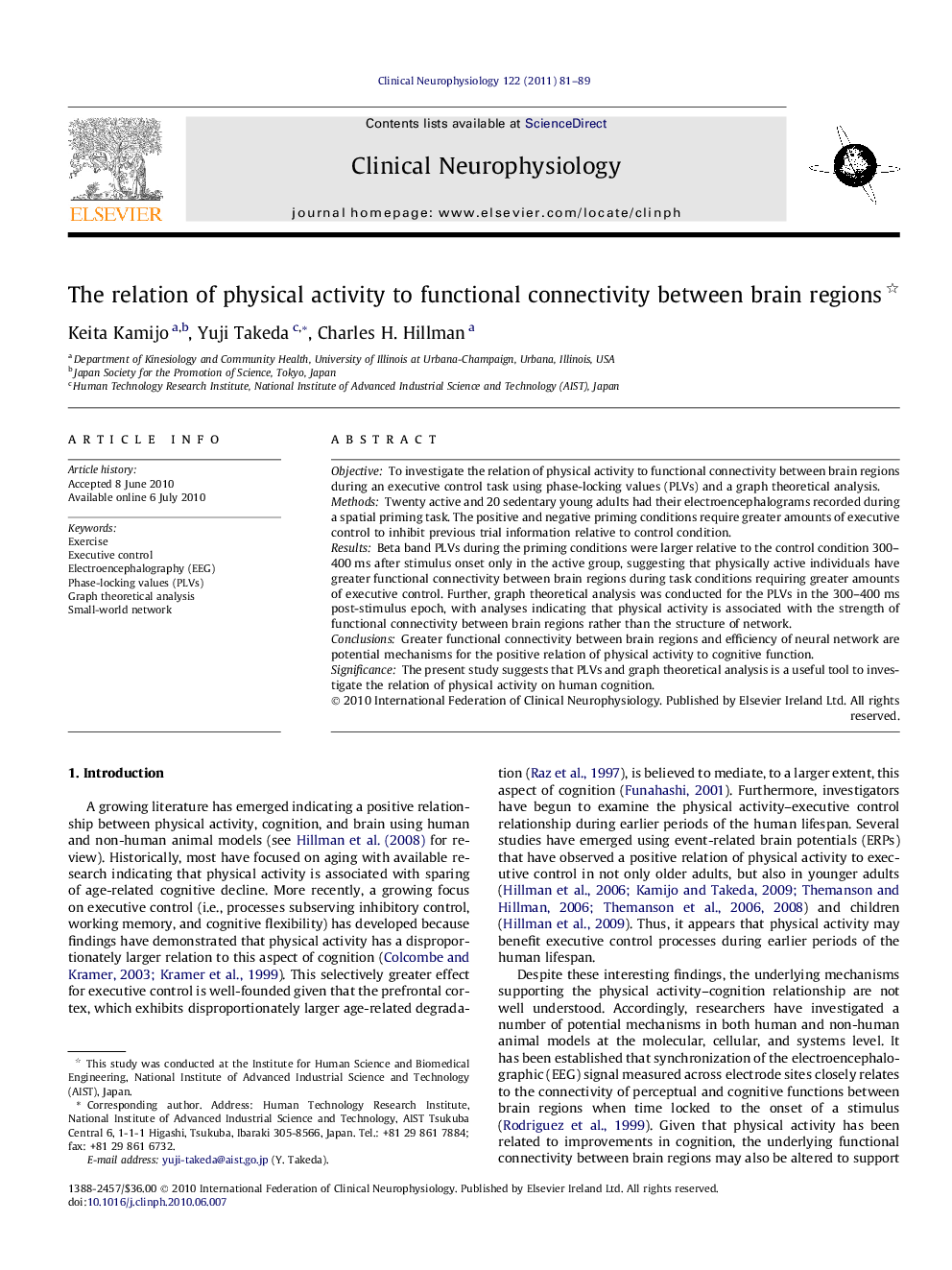| Article ID | Journal | Published Year | Pages | File Type |
|---|---|---|---|---|
| 3044247 | Clinical Neurophysiology | 2011 | 9 Pages |
ObjectiveTo investigate the relation of physical activity to functional connectivity between brain regions during an executive control task using phase-locking values (PLVs) and a graph theoretical analysis.MethodsTwenty active and 20 sedentary young adults had their electroencephalograms recorded during a spatial priming task. The positive and negative priming conditions require greater amounts of executive control to inhibit previous trial information relative to control condition.ResultsBeta band PLVs during the priming conditions were larger relative to the control condition 300–400 ms after stimulus onset only in the active group, suggesting that physically active individuals have greater functional connectivity between brain regions during task conditions requiring greater amounts of executive control. Further, graph theoretical analysis was conducted for the PLVs in the 300–400 ms post-stimulus epoch, with analyses indicating that physical activity is associated with the strength of functional connectivity between brain regions rather than the structure of network.ConclusionsGreater functional connectivity between brain regions and efficiency of neural network are potential mechanisms for the positive relation of physical activity to cognitive function.SignificanceThe present study suggests that PLVs and graph theoretical analysis is a useful tool to investigate the relation of physical activity on human cognition.
